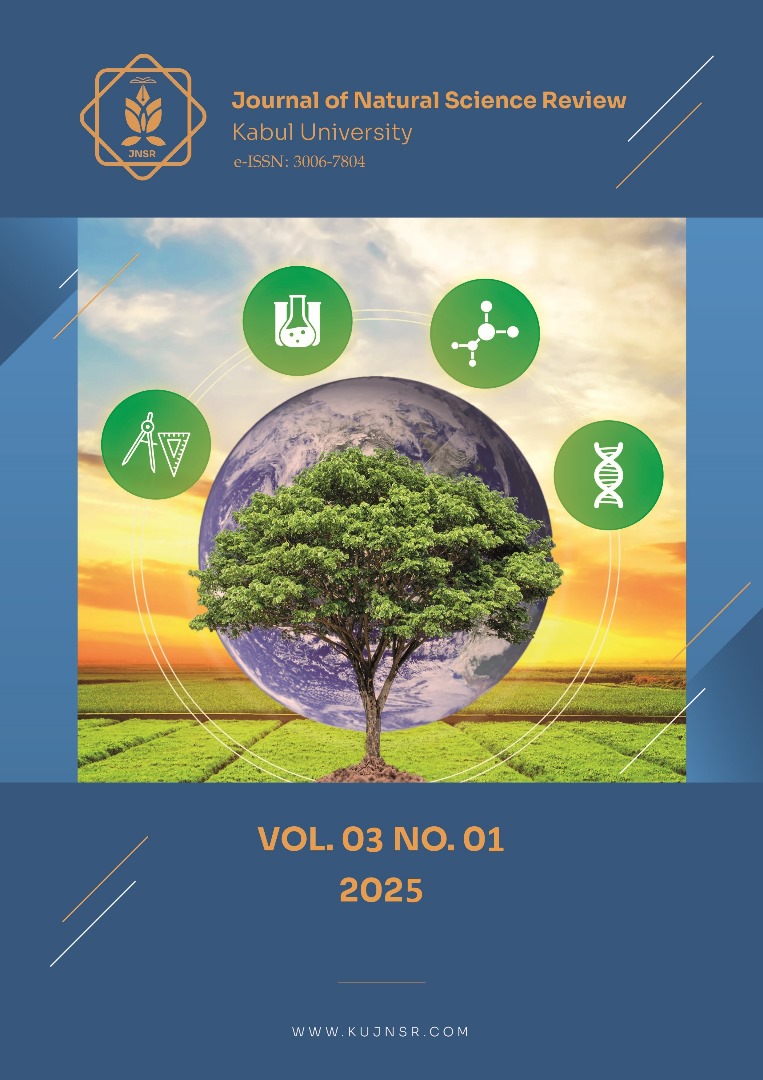Effect of Storage Temperature on the Microbiological, Physicochemical, and Sensory Properties of Semi-Hard Cheese
DOI:
https://doi.org/10.62810/jnsr.v3i1.174Keywords:
Storage, Standard plate Count, Physicochemical, Sensory Properties, SpoilageAbstract
This study investigated the impact of different storage temperatures (room temperature: 20°C and refrigeration: 4°C) on semi-hard cheese's microbiological, physicochemical, and sensory properties over 16 days. Cheese samples were made from fresh cow's milk and subjected to two different storage conditions. Various factors, including bacterial count (Standard Plate Count: SPC), pH, acidity, and sensory characteristics (color, texture, odor, taste, and overall acceptability), were determined at different time intervals (Days 1, 4, 7, 10, 13, and 16). Microbial analysis revealed no significant differences in SPC between the two storage conditions. Similarly, physicochemical parameters, including pH and acidity, showed minor fluctuations, with p-values greater than 0.05 in all cases. Sensory analysis indicated that the cheese's texture, color, and taste at room temperature were less acceptable than those stored in refrigeration. A comparison of the tested parameters (SPC, pH, acidity, and sensory attribute rating) and two storage temperatures (environment and fridge) measured under the two storage conditions using the Mann-Whitney U test showed that there were no significant differences between the two (p > 0.05). However, Spearman's correlation test demonstrated a significant correlation between storage time, microbial load (rs = 0.943), and acidity (rs = 0.831), particularly in refrigerated samples. The results suggest that storage temperature affects the spoilage rate in semi-hard cheese. These findings provide valuable insights into preserving semi-hard cheese and highlight the crucial role of refrigeration in slowing the spoilage process.
Downloads
References
Abd El-Gawad, M. A. M., & Ahmed, N. S. (2011). CHEESE YIELD AS AFFECTED BY SOME PARAMETERS REVIEW. Acta Scientiarum Polonorum Technologia Alimentaria, 10(2), 131–153. Link
Adams, M. R., & Moss, M. O. (2008). Food Microbiology (3rd ed). The Royal Society of Chemistry. Link
Alshareef, H. A., Aly, M. M., Bokhari, F. M., & Al-Seeni, M. N. (2023). Microbial contaminants and risk factors involved in the contamination of different types of cheese samples. AGBIR, 39(1), 421–426. https://doi.org/DOI:10.35248/0970-1907.23.39.421-426
AOAC (Association of Official Analytical Chemists). (2005). Official methods of analysis (18th edition). The association of official analytical chemists. . https://www.scirp.org/reference/ReferencesPapers?ReferenceID=1763751
Ayeni, A. O., Adeeyo, O. A., & Oresegun, O. M. (2014). The production of Wara cheese from locally sourced coagulants and its nutritional evaluation. IOSR Journal of Environmental Science, Toxicology and Food Technology, 8(10), 55–57. https://doi.org/10.9790/2402-081025557
Belitz, H. D., Grosch, W., & Schieberle, P. (2009). Milk and dairy products. In Food chemistry (pp. 498–545). https://doi.org/10.1007/978-3-662-07279-0_11
Buňková, L., & Buňka, F. (2017). Microflora of processed cheese and the factors affecting it. Critical reviews in food science and nutrition, 57(11), 2392-2403. https://doi.org/10.1080/10408398.2015.1060939
Cuffia, F., Pavón, Y., George, G., Reinheimer, J., & Burns, P. (2019). Effect of storage temperature on the chemical, microbiological, and sensory characteristics of pasta filata soft cheese containing probiotic lactobacilli. Food Science and Technology International, 25(7), 588–596. https://doi.org/10.1177/1082013219854563
Drake, M. A., Miracle, R. E., & McMahon, D. J. (2010). Impact of fat reduction on flavor and flavor chemistry of Cheddar cheeses. Journal of Dairy Science, 93(11), 5069–5081. https://doi.org/10.3168/jds.2010-3346
El Owni, O. A. O., & Hamed, O. I. A. (2009). Effect of Storage Temperature on Weight Loss, Chemical Composition, Microbiological Properties and Sensory Characteristics of White Cheese (Gibna Bayda). Research Journal of Agriculture and Biological Sciences, 5(4), 498–505. https://doi.org/10.3923/pjn.2008.75.80
FDA (U.S. Food and Drug Administration). (2017). Cheese and Cheese Products. Retrieved from https://www.fda.gov/media/110822/download
Fox, P. F., Guinee, T. P., Cogan, T. M., & McSweeney, P. L. H. (2017). Fundamentals of Cheese Science. Springer. https://link.springer.com/book/10.1007/978-1-4899-7681-9
Hargrove, R. E., McDonough, F. E., & Tittsler, R. P. (1967). Factors Affecting Characteristics, Composition, and Quality of Skimmilk Cheese. Journal of Dairy Science, 50(2), 160–166. https://doi.org/10.3168/jds.S0022-0302(67)87382-X
IDF. (1995). Guide for the Sensory Evaluation of Cheese [Part IV. standard 99A]. IDF.
Kamleh, R., Toufeili, I., Ajib, R., Kanso, B., & Haddad, J. (2012). Estimation of the shelf-life of halloumi cheese using survival analysis. Czech Journal of Food Sciences, 30(6), 512–519. https://doi.org/10.17221/233/2011-CJFS
Lasztity, R. (2009). Milk and Milk Products. Radomir, 2, 156–167. Link
McSweeney, P. L. H. (2007). Cheese problems solved (first edition). Woodhead Publishing Limited. Link
Memisi, N., Veskovic-Moracanin, S., Skrinjar, M., Ilicic, M., & Ac, M. (2014). Storage temperature: A factor of shelf life of dairy products. Acta Periodica Technologica, 45, 55–66. https://doi.org/10.2298/APT1445055M
Moatsou, G. (2019). "Cheese: Technology, Compositional, Physical and Biofunctional Properties:" A Special Issue. Foods, 8(10), 512. https://doi.org/10.3390/foods8100512
Muehlhoff, E., Bennett, A., & McMahon, D. (2013). Milk and dairy products in human nutrition. FAO. Link
Mushtaq, M., Gani, A., Shetty, P. H., Masoodi, F. A., & Ahmad, M. (2015). Himalayan cheese (Kalari/kradi): Effect of different storage temperatures on its physicochemical, microbiological and antioxidant properties. LWT - Food Science and Technology, 63(2), 837–845. https://doi.org/10.1016/j.lwt.2015.04.054
Park, J.-M., Shin, J.-H., Bak, D.-J., Kim, N.-K., Lim, K.-S., Yang, C.-Y., & Kim, J.-M. (2014). Determination of Shelf Life for Butter and Cheese Products in Actual and Accelerated Conditions. Korean Journal for Food Science of Animal Resources, 34(2), 245–251. https://doi.org/10.5851/kosfa.2014.34.2.245
Pintado, M., Da Cruz, A. G., & De Sá, P. B. Z. R. (2014). Cheese microbiology. Dairy Microbiology and Biochemistry: Recent Developments, 1, 113-133. ISBN9780429076497
Perveen, Kahkashean, Alabdulkarim, B., & Arzoo, shaista. (2011). Effect of temperature on shelf life, chemical and microbial properties of cream cheese. AFRICAN JOURNAL OF BIOTECHNOLOGY, 10(74). https://doi.org/10.5897/AJB11.1695
Smigic, N., Miocinovic, jelena, Tomic, jovana, Tomasevic, igor, & Rajkovic, andreja. (2018). The effect of nisin and storage temperature on the quality parameters of processed cheese. Mljekarstvo, 182–191. https://doi.org/10.15567/mljekarstvo.2018.0303
Tamime, A. Y. (2011). Processed Cheese and Analogues (first edition). Wiley-Blackwell. https://scholar.google.com/scholar?hl=en&as_sdt=0%2C5&q=Processed+Cheese+and+Analogues+Edited+by+A.Y.+Tamime&btnG=
Widyastuti, Y., & Febrisiantosa, A. (2013). Milk and Different Types of Milk Products. In V. P. M, L. B. Iturriaga, & P. D. Ribotta (Eds.), Advances in Food Science and Nutrition (1st ed., pp. 49–68). Wiley. https://doi.org/10.1002/9781118865606.ch3
Zheng, Y., Liu, Z., & Mo, B. (2016). Texture Profile Analysis of Sliced Cheese in relation to Chemical Composition and Storage Temperature. Journal of Chemistry, 2016, 1–10. https://doi.org/10.1155/2016/8690380
Downloads
Published
How to Cite
Issue
Section
License
Copyright (c) 2025 Nasir Ahmad Sarwary, Mohammad Yosuf Farahmand , Farzad Afshar, Mohammad Zahir Sakha

This work is licensed under a Creative Commons Attribution-NonCommercial 4.0 International License.



























